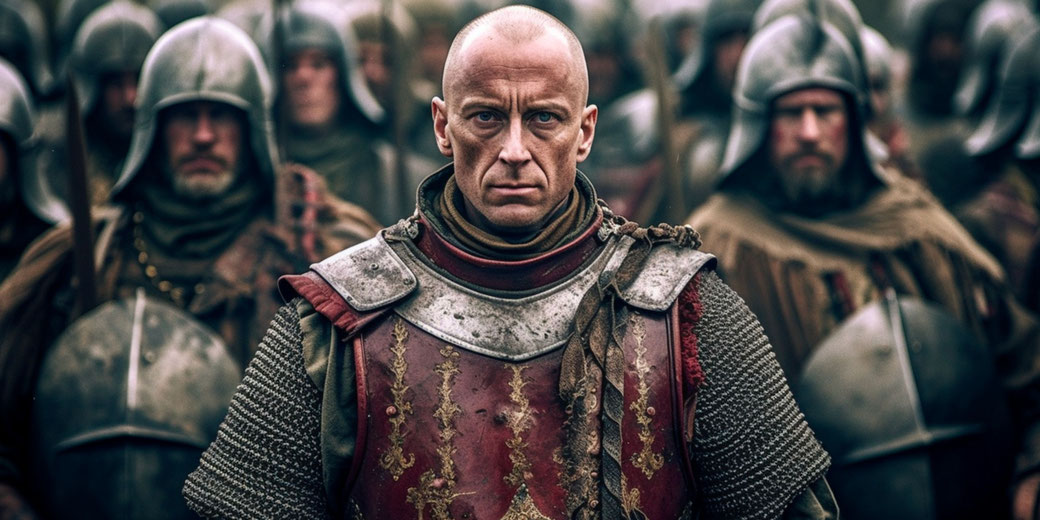How Henry V triumphed at the Battle of Agincourt

On 25 October 1415, Henry V led his force onto the field at Agincourt with approximately 6,000 to 9,000 men, including around 5,000 archers and 1,000 men-at-arms, to face a French host reported in some sources as numbering over 20,000.
The Dauphin himself, however, was absent due to illness, and leadership fell to Charles d’Albret, the Constable of France, whose attempts to get unruly nobles to act together did not work.
This imbalance in numbers failed to weaken English confidence because careful planning had removed weaknesses in equipment and formation as well as ensured steady supply lines.
Terrain and Tactical Positioning
Henry’s force endured a gruelling march from Harfleur, where disease and dysentery had damaged his army.
After suffering those losses, his men arrived at Agincourt in a state of severe exhaustion.
He recognised the need for rapid action and allowed his archers to rest near a stream crossing, which conserved their strength and reduced the tiredness that tramping through wet terrain had caused.
His decision to encamp between two wooded slopes limited French flanking chances and forced the enemy to attack along a narrow front, estimated at approximately 230 to 300 metres.
The freshly ploughed fields, which had become waterlogged after persistent rain, soon turned into thick mud that helped lighter English troops and harmed the heavily armoured French.
Disruption of French Cavalry and Infantry
Henry had instructed his men-at-arms to dismount and fight on foot, and this action avoided the risk of cavalry becoming bogged down.
Most English horses were unarmoured, and fighting on foot improved men’s performance on the dangerous ground.
The soggy turf damaged the French knights’ horses at the outset, which threw groups into confusion and caused mounted charges to fail.
Many knights chose to dismount and advance on foot in tightly packed formations.
They did not realise that the mud would soon rob them of balance, and some soldiers who fell face-first reportedly choked in their armour.
On each flank, English archers drove sharpened stakes into the earth at a forty-five degree angle towards the advancing French.
These wooden barriers halted mounted knights and created deadly channels in which arrows could fell horse and rider alike.
The archers loosed volleys by firing up to six arrows per minute. Their formations were V-shaped, and shallow ditches partly protected them.
When up to three hundred shafts flew in unison, French ranks thinned at a rapid rate.
Collapse of French Cohesion
Among this shower of arrows, mounted and dismounted French men-at-arms, whose heavy armour was a burden rather than protection, waded forward through ankle-deep mud.
Exhaustion stole any unity from their attack, and French command struggled to rally troops under the weight of compacted mud and constant archery fire.
Refusals by many French nobles to cooperate with supporting infantry and crossbowmen only deepened the chaos.
Throughout the day Henry maintained strict control over his reserves, forbidding early attacks that might break formation.
He personally inspected the stakes and watched the progress of the battle from a slight rise, and he encouraged his men by word and example.
This hands-on leadership boosted confidence among archers and infantry, who drew courage from his visible presence.
Victory and Aftermath
Following the collapse of the French front line, the remaining knights struggled to reform behind fallen comrades.
English men-at-arms then advanced in tight ranks, and they cleared the rest of the resistance in an organised way.
During the height of the battle, because he feared another French attack and because he lacked sufficient men to guard prisoners, Henry ordered the controversial killing of many prisoners.
By dusk, the field lay thick with remains of French banners and discarded weapons, whereas English deaths likely numbered in the low hundreds, though some sources claimed fewer than thirty.
Among the fallen were over 1,500 French noblemen, including the Constable himself, three dukes, and numerous counts.
In the aftermath, the triumph at Agincourt secured Henry’s position in northern France and strengthened his claim to the French crown under the Treaty of Troyes, signed in May 1420.
News of this victory uplifted English spirits and forced a period of negotiation good for English interests, thereby extending Henry’s influence on continental affairs.
In later generations, the battle gained a nearly mythical reputation, supported by Shakespeare’s portrayal of Henry as a perfect warrior-king who inspired a "band of brothers" against strong odds.
What do you need help with?
Download ready-to-use digital learning resources
Copyright © History Skills 2014-2025.
Contact via email
With the exception of links to external sites, some historical sources and extracts from specific publications, all content on this website is copyrighted by History Skills. This content may not be copied, republished or redistributed without written permission from the website creator. Please use the Contact page to obtain relevant permission.





